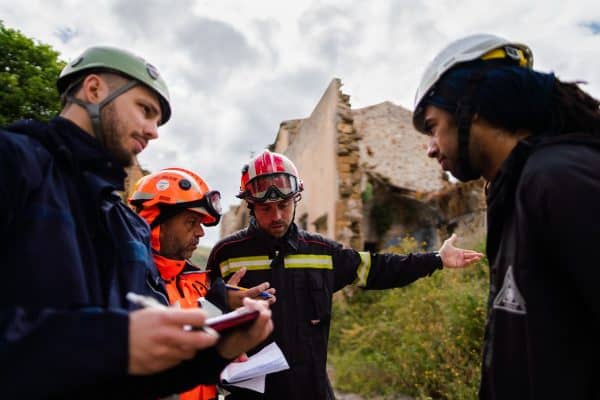For those of you who don’t know, our office is located in a small town outside of Houston. So you can imagine that when anything out of the ordinary happens around here, the whole town knows about it. Something popped up recently that is pretty hard to miss…a drilling rig! I have been driving past it every day coming into work, and I have seen the progress from day 1. Which, of course, sparks my curiosity and interest to write about the steps of drilling a well.
A simple breakdown of the steps to drilling a well can be considered pre-drilling, drilling, and well production.
Pre-Drilling
The pre-drilling process includes things such as geological surveys, permitting, and site planning. Geological surveys allow the systematic investigation of the geology below the surface of the ground. This is, so formations and landforms can be detected. This is important so the availability of oil and gas is able to be detected before breaking the surface.
Once the land of interest is found, permitting is an important part of the process based on legality alone. Once the land is obtained, the exploration and production company must get permits to be able to drill for oil and gas. These permits are per state, and companies must file for approval.
Once the permits are acquired and approved, the next step is to start planning out the site for drilling. This process allows risks to be analyzed, economics to be kept reasonable, and high efficiency to be met. Safety is one of the highest priorities when site planning. Along with site planning is to plan out the well parameters and boundaries.
Drilling
We have done plenty of blogs on this process. Some examples we have done are fracking, and unconventional and conventional drilling. When it comes to the basic steps of drilling, start with drilling the well to the depth that is required. When it comes to drilling the well itself, there are many stages and steps that are included. When the well is drilled to the required depth, cement casing and piping is placed downhole. The video below is pretty dated. So I apologize in advance for the faded pictures and animations. However, it is good information and a good visual of the drilling process.
Well Production
Lastly, we have well production. During this phase, the drilling has been completed, and the oil and gas extraction begins. Some wells can last for decades, and others could last as short as a year. Gas doesn’t usually come straight out of the well sparkly clean and ready to be sold. It may come up with water, mud, sand, hydrocarbons, H2S, CO2, etc. Whether the plan for the gas is to sell it, burn it, or use it, you may have to treat it first. Once the well stops producing, it is capped under the surface, and the well pad is deconstructed.












